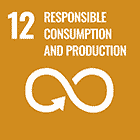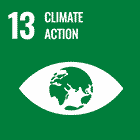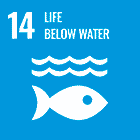Let’s keep in touch!
The latest news of the Metis Fund, delivered straight to your inbox!
In India, Manveer Singh Gautam creates sculptures from waste materials, serving as manifestos questioning our consumerist models and encouraging the reduction of plastic pollution. In Bhubaneswar, Odisha, he engages local residents to collectively build monumental sculptures.



Sculpting waste to address ocean pollution
According to environmental NGOs, nine million tons of waste are produced annually in India. Increasing plastic pollution represents a major challenge for the country. Due to inadequate infrastructure, a large portion of this waste is not recycled. It ends up along roadsides, abandoned in open-air landfills, and pollutes rivers and oceans. The coastal region of Odisha, on India’s eastern side, is particularly affected by this issue. Local pollution is compounded by waste carried from Southeast Asia by the ocean currents of the Bay of Bengal.
The consequences for the environment and human health are dramatic: plastic threatens coastal and marine ecosystems, and seawater laden with microplastics infiltrates freshwater sources, contaminating fishery resources. Establishing waste treatment infrastructure is necessary, but it is not sufficient.
million tons of plastic waste are produced every year in India
people collectively created artworks promoting plastic pollution reduction
visitors attended the exhibitions
Manveer Singh Gautam, known as Plasticvalla, is a visual artist. The son of a farmer, he grew up in Uttarakhand, northern India, raised with a deep respect for nature. While studying at the College of Arts in Delhi, he was deeply shocked by the omnipresence of plastic pollution in the capital. The environmental degradation caused by plastic has since become the central theme of his work. He designs his sculptures, made from waste, as practical recycling tools and manifestos questioning our consumerist models.
With Metis, and in collaboration with the city’s urban planning department, Manveer Singh Gautam worked for several weeks with around 100 residents of Bhubaneswar, Odisha, to collect various types of plastic waste: bags, tarps, straws, inner tubes, basins, and more. Together, they cleaned, compacted, glued, and assembled the materials to collectively create several monumental pieces. The artist shared his commitment to environmental protection, and participants realized through artistic practice that recycling is not just a tedious task but can also result in beautiful, socially valuable projects.
The works were displayed on the beaches of Bhubaneswar and in a city cultural center, seen by several hundred visitors.
This project is one of three addressing plastic waste issues, taking place in India, Indonesia, and Mauritius. The artists involved in all three projects exchanged ideas and shared their experiences.